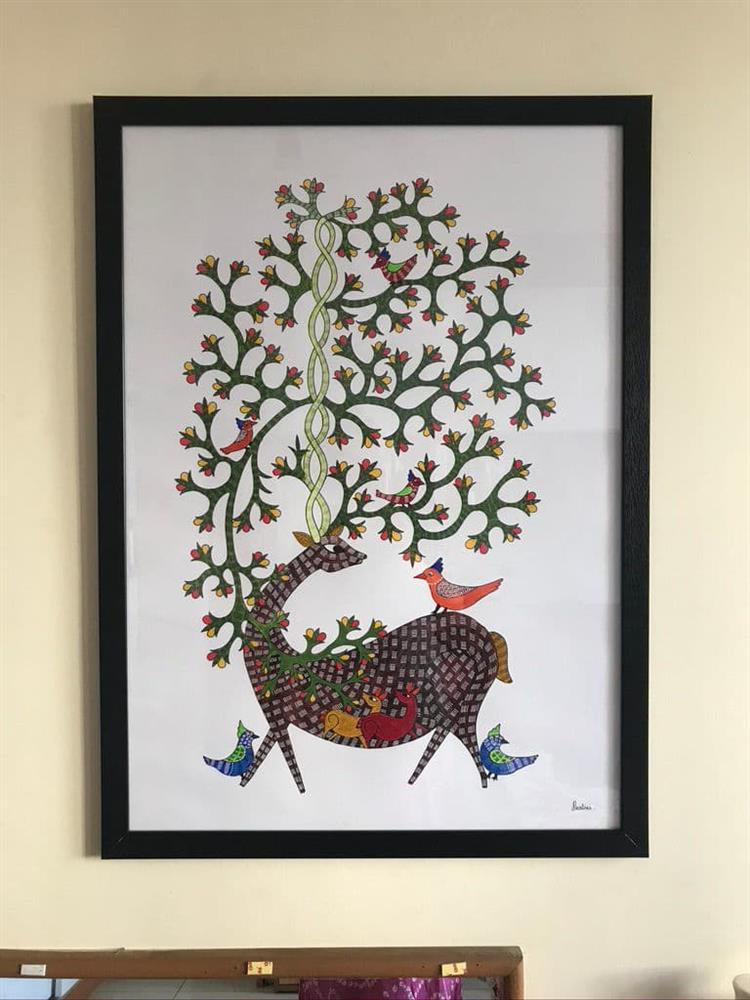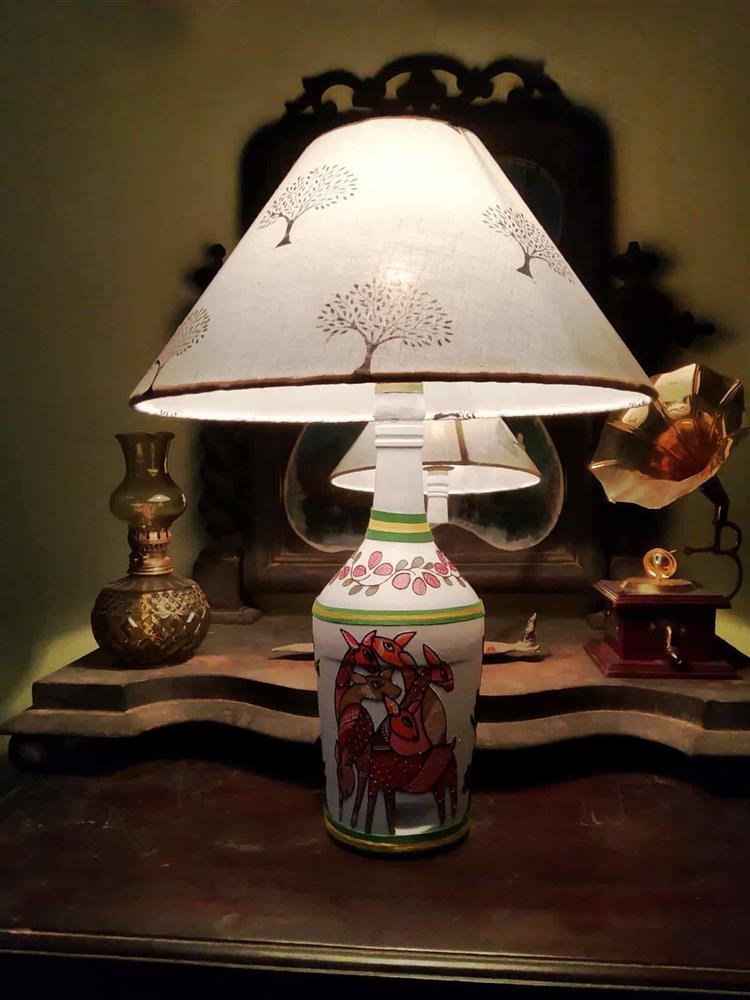Gonds are the traditional Adivasi Community in India mainly found in Madhya Pradesh and surrounding states. Traditionally, the Gond paintings were done on mud walls with colors extracted from natural materials like soil, charcoal, cow dung, and leaves. The designs are based on the rituals and traditions practiced by the community. Nature is also a dominant theme as Gond's inhabited forests for centuries. Painting in the region has been happening for a really long time as the history of the Gond people dates nearly 1400 years previously, however, the Gond people could just be imitating their ancestors as there are cave paintings in the region that go all the way back to the Mesolithic Period.

Inspiration
According to the Gond belief system, all things are inhabited by a spirit and, consequently, are sacred. Gond paintings are a reflection of man’s close connection with his natural surroundings. While a majority of Gond paintings do take inspiration from nature, it isn’t the only source of ideas. They also turn to the myths and legends of India or showcase images from the daily lives and dreams of their art.
Colors
The Gond paintings incorporate the use of lines, the alignment has a striking effect on the user captivating them, as they can’t take their gaze off. The lines give an impression of movement. The peculiar thing you will notice when you see a terrific specimen of Gond painting is the combination of lively colors used, especially the likes of white and yellow. The pigments they use are extracted from natural sources like charcoal, plant sapling, tinted soil, tree leaves, and cow dung. The yellow pigment is taken from local sands known as Chui mitti, and the brown hue is produced from gheru mitti, the hibiscus facilitates the red pigment for Gonds to use in their works. White is taken from rock calcium.
Tools Used
The few tools that are used in tribal paintings are as follows: Wall paintings: For wall paintings, the locally made brush [called koochi in the local parlance] is used. This brush is made with the fibers obtained by crushing the bark of some locally available trees. Canvas/Chart paper paintings: The main tools required for canvas or chart paper paintings include a wooden frame on which the canvas/chart paper is fixed with the help of drawing pins to straighten it. Apart from this, different brushes [numbers 6 to 4] are used depending on the requirements of the drawing. Fevicol and plastic emulsions are used as primers on the canvas

Use of the Product
KolorKloud's Tribal paintings provide an ethnic, traditional, and aesthetic view of the remote tribal village life. Therefore, these paintings are in demand in the art emporiums and exhibitions to be used as decorative pieces in homes and offices.
Gond painting on wood, painted wooden trays, tea coasters, and boxes have become extremely popular globally. Want to buy one? Explore more traditional Indian Paintings at our online store.









































